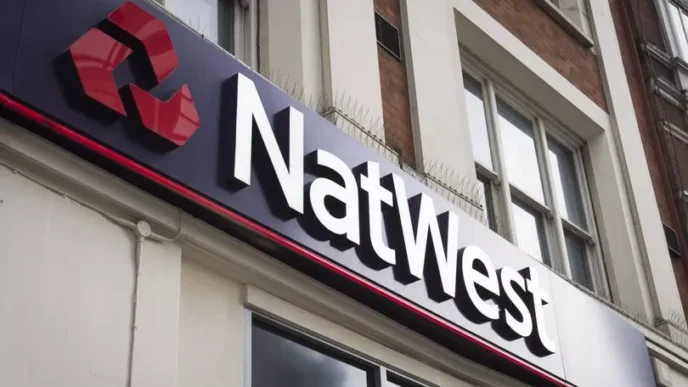After months of tense negotiations and political deadlock, European Union environment ministers have finally reached a landmark agreement to reduce the bloc’s carbon dioxide (CO₂) emissions by 90% by 2040, compared to 1990 levels. The breakthrough marks a pivotal step in Europe’s climate roadmap toward full climate neutrality by 2050, reaffirming the EU’s position as a global leader in climate action despite growing internal political pressures and industrial concerns.
A Long-Awaited Breakthrough in a Divided Europe
The agreement, finalized after a marathon session in Brussels, ended weeks of stalemate between pro-climate nationslike Germany, France, and the Netherlands and industry-heavy countries such as Poland and the Czech Republic, which had pushed for more flexible targets to protect jobs and economic growth.
Under the deal, EU member states committed to cutting greenhouse gas emissions by 90% by 2040, a goal that will serve as an intermediate checkpoint between the 2030 target of a 55% reduction and the final objective of net-zero emissions by mid-century.
The decision was hailed by European Commission President Ursula von der Leyen as a “historic step for Europe’s green transition.” She emphasized that the compromise reflects “the balance between environmental ambition and industrial competitiveness” — a theme that has dominated climate debates in Brussels for much of 2024 and 2025.
“Today, Europe has proven that ambition and pragmatism can coexist. We are setting a path that protects our planet while ensuring that European industries remain innovative and globally competitive,” von der Leyen said in a statement following the meeting.
Key Provisions of the Agreement
The new framework outlines a series of policy instruments designed to help member states meet the 2040 target while cushioning the economic impact of the transition. Key components include:
- A strengthened Emissions Trading System (ETS): The carbon pricing mechanism will expand to cover more sectors, including maritime transport and heavy industry.
- Incentives for carbon capture and storage (CCS): The EU will fund new CCS infrastructure to help industries with hard-to-abate emissions, such as cement and steel.
- Phasing out fossil fuel subsidies: Member states will gradually eliminate public subsidies for fossil fuels by 2035.
- Accelerated renewable energy deployment: A renewed push for solar, wind, and hydrogen projects, backed by the EU Innovation Fund.
- Just Transition Mechanism expansion: Additional support for coal-dependent and industrial regions to retrain workers and attract green investments.
Environment Commissioner Wopke Hoekstra, who played a key role in brokering the deal, described it as a “balanced yet ambitious” pathway forward.
“This is not only about cutting emissions — it’s about securing Europe’s economic and social future. We are laying the foundation for a new industrial era built on clean technology and innovation,” Hoekstra said.
Balancing Climate Ambition and Economic Reality
The road to the agreement was far from smooth. Several member states, including Poland, Hungary, and Romania, initially resisted the 90% reduction target, arguing that such ambition could harm their energy security and industrial competitiveness.
Polish Climate Minister Paulina Hennig-Kloska warned that a “one-size-fits-all” approach could deepen economic disparities across the continent.
“Our economies are not all at the same stage of development. The EU must ensure fairness in this transition — not punish countries that rely more heavily on traditional energy,” she said prior to the meeting.
However, other governments, including Germany and Denmark, pushed back, saying that delaying decisive action would be costlier in the long term. Germany’s Vice Chancellor Robert Habeck emphasized that climate neutrality was not only a moral responsibility but also a competitive advantage.
“The industries that adapt first will lead the world. Europe can’t afford to trail behind the U.S. and China in the race for green technology,” Habeck said.
The final deal reflects a carefully negotiated compromise, granting flexibility in implementation timelines and additional funding for member states with lower GDP per capita.
Industrial Lobbying and Political Pressure
The negotiations took place against a backdrop of mounting industrial lobbying and political tension. Major European industries — from automotive to steel — had lobbied intensely for a “realistic” target, warning that overly strict regulations could drive companies abroad.
The European Steel Association (EUROFER) and ACEA, the European Automobile Manufacturers Association, both argued that the bloc should prioritize innovation incentives over punitive carbon costs.
Meanwhile, environmental groups like Greenpeace EU and Climate Action Network Europe accused governments of watering down the agreement under corporate pressure.
“While a 90% reduction target is a step forward, it still falls short of what is needed to keep global warming below 1.5°C,” said Tara Connolly, a climate campaigner with Greenpeace EU. “Europe must act faster, not slower.”
Linking the Deal to the EU Green Deal and 2050 Vision
The 2040 target serves as a cornerstone of the EU Green Deal, which aims to make Europe the first climate-neutral continent by 2050. The new agreement will guide national governments in shaping their climate and energy plans for 2031–2040, including investments in renewable energy, transportation, and industry decarbonization.
According to the European Commission’s projections, meeting the 90% target could reduce fossil fuel imports by up to 80% by 2040, saving the bloc an estimated €400 billion in energy costs and creating over 2 million new green jobs.
Still, the Commission acknowledged that the transition would require massive investment, estimated at more than €1 trillion annually through 2040, from both public and private sectors.
Challenges Ahead: Implementation and Political Headwinds
Despite the breakthrough, significant challenges remain. The upcoming European Parliament elections in 2026 could reshape the political landscape, potentially empowering parties skeptical of the EU’s climate agenda.
Several governments, particularly in Eastern Europe, have already hinted that they will seek delays or exemptions for heavy industry, citing inflationary pressures and the cost of living crisis.
Moreover, global dynamics — including rising competition from the U.S. Inflation Reduction Act and China’s clean-tech expansion — will test Europe’s ability to maintain both environmental leadership and economic resilience.
“The EU is at a crossroads,” said a senior EU diplomat. “This deal shows that compromise is possible, but implementation will be the real test. Every country must now turn commitments into results.”
A Symbolic and Strategic Turning Point
The 2040 CO₂ reduction deal is more than a policy milestone — it’s a symbol of Europe’s determination to stay united on climate policy despite mounting political, economic, and geopolitical challenges.
It reaffirms that climate action remains at the heart of the EU project, even in times of uncertainty. The path forward will be complex and costly, but for many leaders, the alternative — inaction — is no longer an option.
“This is Europe’s moment to lead,” von der Leyen declared. “By choosing ambition today, we are securing prosperity and stability for generations to come.”
With the 2040 target now agreed upon, attention will turn to national governments and industries to deliver the transformation — one that could redefine Europe’s economy, energy system, and global standing for decades to come.




